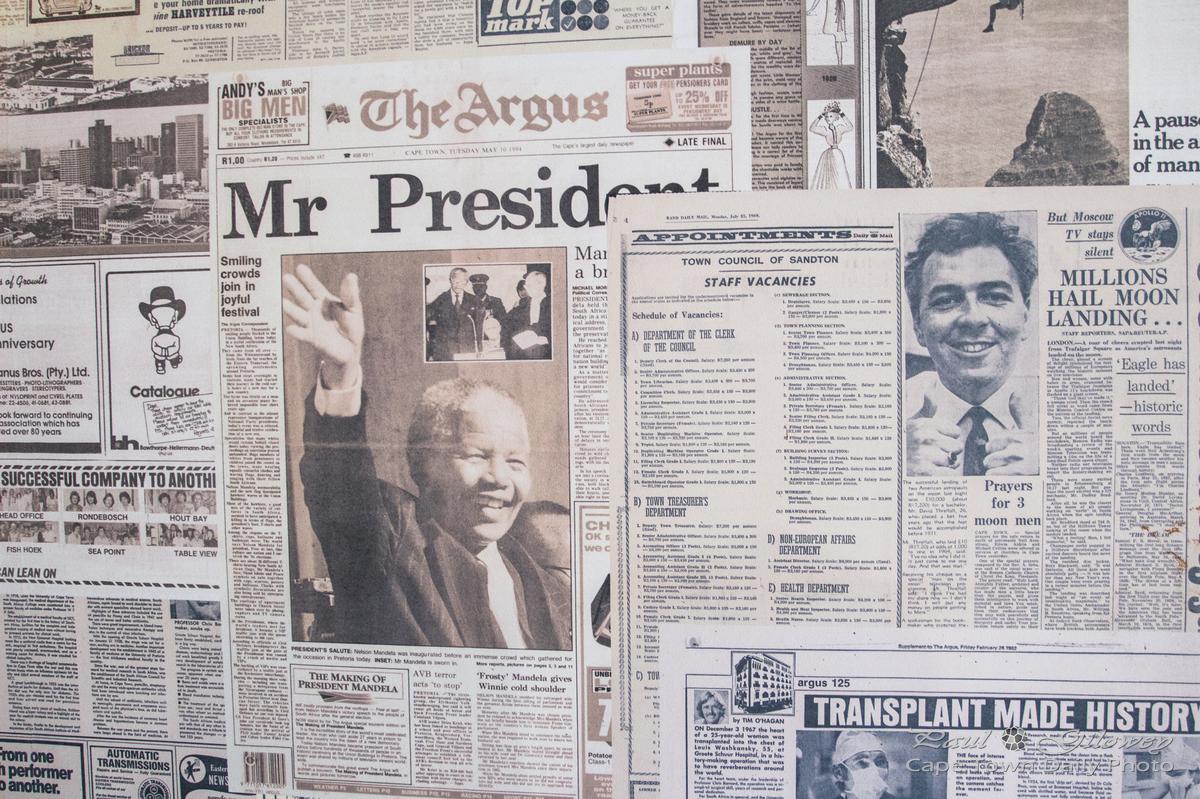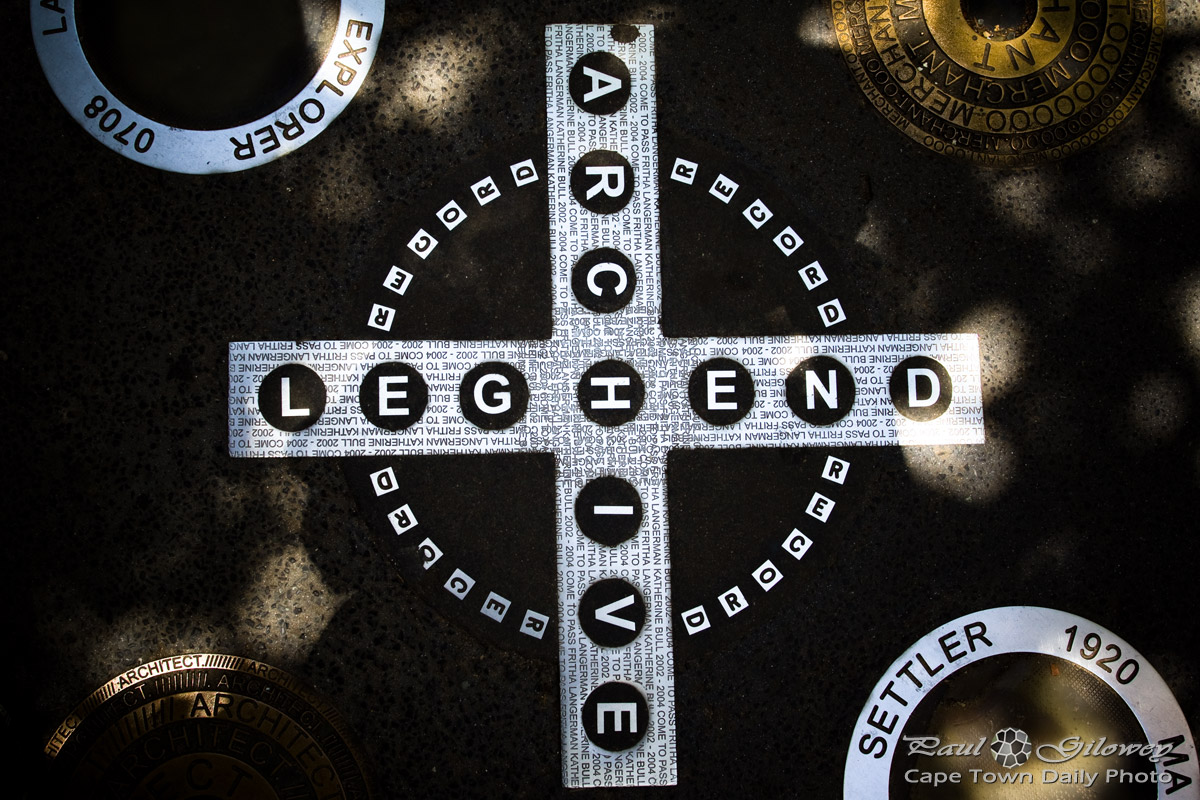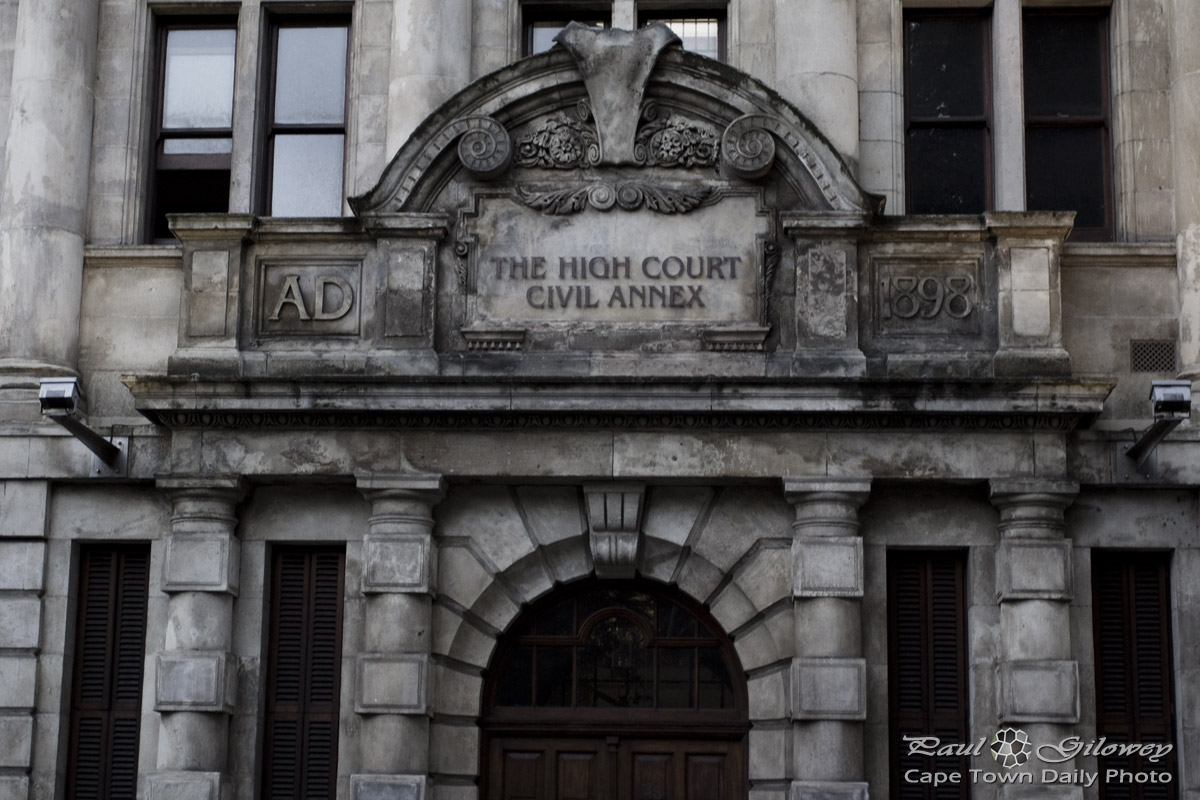Tag Archives: history
Where is the Trojan Horse Massacre memorial?

The Trojan Horse Massacre

Cape Town’s Winged Victory at the Cenotaph

The Wikipedia page quotes South Africa's 1924 Governor-General, the first Earl of Athlone as stating:
"I cannot but believe that the existence of these visible memorials, which are to be found throughout the world – silent witnesses to the desolation of the war – will through the years to come, be potent advocates of peace and will eventually serve to draw all peoples together in mutual understanding."
I can say, that looking at these memorials up close, I can see exactly what he meant. Whether they'll have any effect on war-makers; of that I'm unconvinced.
(Oh, and in case you missed that... no, neither did I know that Athlone had Earls!)
Louis Botha’s statue

From the angle of the photo, and the view of Lion's Head in the background, I'd say there's a fair chance that you worked out that this here is the entrance to Cape Town's parliament buildings, and that the well-known Company's Gargens are more or less to the right of this photo, just behind the parliament buildings.
While thinking about this photos I realised that I've never visited the buildings - and I'm not actually aware whether or not the public can easily gain entrance. Do you perhaps know?
Explorers, settlers, architects, and legends
High Court Civil Annex
The Great Star of Africa

The Cullinan Hotel is named after Sir Thomas Cullinan, the owner of the Pretoria mine where the largest gem-quality diamond was mined back in 1905. Before it was cut, the Cullinan diamond (also known also as The Great Star of Africa) had a mass of approximately 3106.75 carat - which is more or less 621.35 grams!
The Cullinan 1 diamond, cut from the raw Cullinan diamond, now has its home in Britain's crown jewels, forming the head of the Sceptre with the Cross.
There's an interesting story about how the diamond was transported to England via registered mail - read about hit in the Wikipedia Article.
A really old telephone booth

Trash art

Tugboat that tugged the trawler

Unless you're South African, you may not appreciate the tugboat's name. The first part of the name is a common South African surname (similar to Smith), and the second part (Amandla) is a Xhosa and Zulu word meaning Power. So together, they mean Smit Power. Awesome name for a tugboat hey?! :)
What's especially memorable about the word amandla is that it's part of a war cry (of sorts) adopted by members of the ANC during the apartheid times. Back then, and now sometimes also, the leader of a group of people would shout out "Amandla!" and the crowd would respond with "Awethu!", which together mean "Power to the people!".
Broken porcelain

I found this display in the wine tasting room of Solms Delta, a popular wine estate just outside of Franschhoek.
Sir Adderley’s Adderley Street

Alex commented on yesterday's post mentioning that the mayor of the day named the street was named after Sir Charles Adderley in 1850 to show honour to him for successfully convincing the British government not to turn Cape Town into a penal colony - like they did Australia.
Big-up to you Sir Adderley! :)
Johan Anthoniszoon van Riebeeck

Even though Jan and his crew weren't the first people on our shores he was the first "Westerner" to set up a formal settlement here, and in colonial-times that made him Commander of the Cape of Good Hope, a position that he held for 10 years from 1652 until 1662. Interestingly (and perhaps because of all the friends he made while stationed in Cape Town) Jan retired to Jakarta where he passed away in 1677.
Barbed wire and the Anglo-Boer War

In 1899 the second Anglo-Boer War broke out which resulted in the two republics being incorporated into the British Empire.
Due to the title of this post you've probably gathered that there's a relationship between barbed wire and the Anglo-Boer war. Allow me to explain: Barbed wire was developed in 1860 to keep livestock from wandering into neighbouring properties. It's use spread from France to America and was later used for military purposes in the Spanish-American War during the Siege of Santiago.
The British armed forces must have learned from this as only a year after the Seige of Santiago did they use barbed wire to build the infamous concentration camps that kept the Boers wives and children captive.
Die Oude Molen mystery

If you know something about this house or property, please do leave a comment on this post.
A Ford Fairlane and the old Immorality Act

"This Ford Fairlane once belonged to Mrs Evita Bezuidenhout's husband, Oom Hasie. In 1958, Dr J.J. de V. Bezuidenhout became a cabinet minister in the government of Hendrik Verwoerd. He held two portfolios: Minister of Water Affairs and Minister of Black Housing - and combined his portfolios into one by building a black township in a dam.The two bullet holes in the front window are a reminder of the failed assassination attempt on his life at The Wolwekloof turn-off along the Warmbad road in 1959.
Dr Bezuidenhout was arrested in 1960 for breaking the Immorality Act. He was found on the backseat of this car in a compromising position with a Swazi waitress from the Laagerfontein Grand Hotel. After interventions by his wife and her powerful friends in the National Party, all charges against Minister Bezuidenhout were dropped. The woman disappeared."
Unfortunately the old Immorality Act wasn't enforced because the cabinet Minister was married - it wasn't that kind of morality that the government concerned themselves with. Isn't it weird now to think that there was once legislation that prohibited inter-racial romantic relationships?
Collier Jetty, grain elevators, and fishing boats

The water that you see in the bottom half of this photo is that of the Victoria Basin - the basin that stretches out alongside the V&A Waterfront shopping mall. The Collier Jetty, on the far end of the basin, is (as you can see) currently used as a spot to moor colourful fishing boats.
According to an industrial heritage white paper that I found, Cape Town harbour's elevator complex (the metal structure extending the length of the jetty) had been used by the Farmer's Co-operative since 1987 to load grain for export. I'm not sure whether or not it's till in use by the FC since the article mentions that due to the increased length and draught of ships they were no longer able to use it (for exports).
Don't you just love how the fishing boats are painted in similar fashion to the colourful houses of Bo-Kaap?
The world’s first heart transplant

It's common knowledge to South Africans, but perhaps you're unaware that the world's first successful heart transplant was done in 1967 by South African doctor, Dr. Christiaan Barnard. The hospital that you see in this photo is Netcare's Christiaan Barnard Memorial Hospital (map) - which is not the one in which the first transplant took place, but rather one named in memory of Dr. Barnard.
The actual transplant took place at Cape Town's Groote Schuur hospital (directly translated at large barn) and, as you'll no doubt read, the patient survived for only 18 days, passing away due to pneumonia. In light of this, don't you think it's interesting that Dr. Barnard passed away from a severe asthma attack while on vacation in Cyprus? The first transplantee and transplantor both passed away due to lung conditions.
A pretty kind of ugly

Many people would jump at the chance of having everything be pristine and new, but don't you think the City would lose some of it's character if, in some way, it were possible that all these building would be restored?
However, I'm torn in two because there's plenty of room for improving the City's surrounding suburbs - and while I'm all for beautifying and uplifting rundown areas, I'd hate to lose all the history reflected in these walls.
Nelson Mandela’s first public speech

Don't you just love that he's released from prison and on that same day addresses the public, opening with:
Friends, comrades and fellow South Africans.
I greet you all in the name of peace, democracy and freedom for all.
I stand here before you not as a prophet but as a humble servant of you, the people. Your tireless and heroic sacrifices have made it possible for me to be here today. I therefore place the remaining years of my life in your hands.
Brenda Fassie, a South African legend

Brenda unfortunately passed away 2004, at the age of 39, after suffering an asthma attack and cardio-respiratory arrest, and I recall at the time the mood in the country turned extremely solemn. I believe that even ex Presidents Nelson Mandela and Thabo Mbeki visited Brenda while she was in hospital - which, I'm sure, speaks for how important she had been to the nation.
I'm sure that Brenda is still today still.
Longmarket Street in the old part of town

If you're super religious about reading my posts (and thank-you if you are :) ), you may recall that in April of 2008 I wrote one about Longmarket Street and how (many years ago) farmers used it to get their produce down to Greenmarket Square.
This photo is a different perspective on Longmarket Street. Can you imagine taking a horse cart filled with produce down to the market way below? Wow! :)
St Joseph’s Marist College, the reprise

My last three photos, and now this one too, were taken at St Joseph's Marist College in Rondebosch. This photo is of the school chapel, the one attached to the bottom of the tower in yesterday's photo. I did some research and turned up a Facebook page called "I went to St. Joesph's [sic] College, Rondebosch".
Visit the page and read the Basic Info section, and then click through to the Wall - it's terribly entertaining and will give you some insight into what life must have been like at the college. I guess it may also cause you to realise that almost everywhere, students are the same. :)
In closing, let me share what I found to be the funniest line from the Basic Info section of the page:
" If you were one of the lucky students to attend St. Joesph's Marist College, you would remember a few of these little things, that make the school a legend:
...
The time a bunch of kids tried to perform and exorcism on the "HAUNTED STATUE" of the Saint! " :D
I wonder if it's this statue to which the writer refers?
University of Cape Town – the Groote Schuur Campus

On 7 October 1983, the University of Cape Town's Groote Schuur (translated as "big barn") Campus was declared a national monument.
Originally, in 1829, South African College (later renamed to University of Cape Town) trained students in a building in Long Street. In 1841 they moved to Government Avenue, before finally taking occupation of the Groote Schuur campus in 1928.
Today, the buildings remind me of those old English school buildings that you'd expect to find Harry Potter frequenting. The campus is definitely worth a visit, so if you have some time on your hands to walk around and observe students in their natural habitat, make a turn past the Groote Schuur Campus - here's a map to this exact spot. :)
A flag of convenience

Of course, being a girl, I'd probably just pick the flag that best matched my pretty ship's colour scheme, and get the vessel registered in that country. Which is probably why Paul won't let me have a sailing ship.
Jameson Memorial Hall and the pillars of colonial society

Jameson Memorial Hall on the University of Cape Town's (UCT) campus is an impressive structure that has as its backdrop the towering Devil's Peak and Table Mountain mountain range. When I first saw the building and that it was a memorial to one Leander Jameson I wondered to myself what he'd done to have his name etched into the fibre of one of South Africa's most prestigious universities.
The story basically goes that he was Scottish and practised as a doctor in South Africa. Jameson befriended Cecil John Rhodes and ran several missions for him to help establish Rhodesia (now Zimbabwe). Leander Jameson disobeyed the British High Commissioner and spear-headed the famous Jameson Raid on the Boer government. He was captured and forced to return to England where he was tried and spent over a year in jail.
On his release he returned to Cape Town where he was elected to Cape Parliament in 1900 and became Prime Minister in 1904!
Perhaps I don't fully understand the history and story of Leander Jameson, but to me it would seem as though the British Cape Colony started off on a bit of a wobbly foot around the turn of the 20th century! :)
Read more about Leander Jameson's story here.
The Cape Town Stadium – a prime location

The predecessor to the Cape Town Stadium was known as Green Point Stadium. The old stadium was somewhat underwhelming when compared to the new one that you can see in this picture.
I remember a few years back going to watch bands like Metallica and singers like Robbie Williams performing at Green Point Stadium. I even remember having a school athletics competition there many years ago. The old Green Point Stadium holds many memories for many South Africans, but even so, I can't say that I'm sad to see it replaced with a sparkling-white shiny new stadium. :)
Old Cape Town’s Oranjezicht

The suburb Oranjezicht (which means "orange view" in Dutch) was named after the old fruit and vegetable farm that used to exist here in the 17- and 1800s. Several theories remain for why the farm was called Oranjezicht - a popular one being that it had many orange and lemon trees, which (when in season) must have given the view from the homestead an orange hue.
However, the theory that I favour is that it got its name from the fifth bastion of the Castle of Good Hope, called "Oranje", which on a clear day would have been visible from the farm. This bastion in fact points towards where the farm would have been situated. See the the purple line that I drew on this Google Map, from the Castle of Good Hope's Oranje bastion to the suburb Oranjezicht.
Of course, you could argue that the bastion got its name due to the orange and lemon trees growing on the slopes of Table Mountain. But you'd be wrong. :) The bastion actually took on the name of the Dutch prince of Orange, Prins Willem van Oranje.
I took this photo in the opposite direction from the one in my previous post; that dark patch with cloud above is Table Mountain, so at this point I had my back to the Castle of Good Hope, and the bastion Oranje.
District 5, aka De Waterkant, aka Cape Quarter

Most locals would know that De Waterkant is also known as the Cape Quarter. I never realised, though, that it had previously been District 5, sibling to the infamous District 6.
Way back in the 1700s and 1800s it was the home of many Malay slaves, and then in about 1966 the government of the day forcefully relocated these people away from their sea view and mountain shade to the comparatively barren and flat Cape Flats. Unfortunately for the government, and definitely not according to their plan, it was not the upper crust that moved into District 5 - it was the bohemian liberals, free-thinking students, and proudly gay population. *snigger*
Today De Waterkant is still an energetic and colourful area with old buildings and cobble streets. It's an area that you should spend at least an afternoon exploring. Here's a map with a place marker to help you find this road. :)


